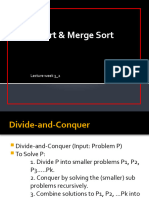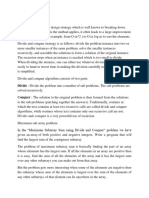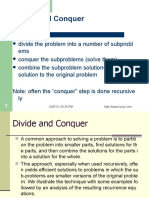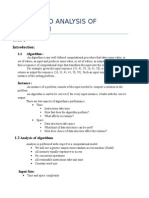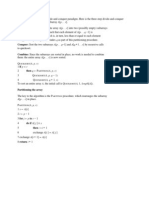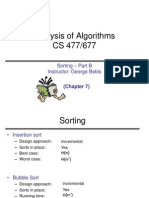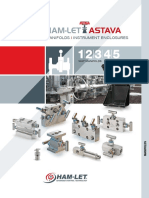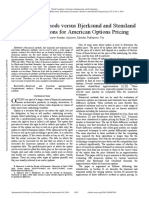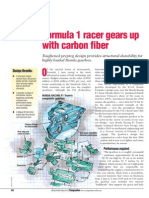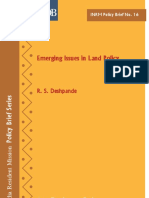0% found this document useful (0 votes)
12 views23 pagesModule2 2
The document describes various sorting algorithms, including divide-and-conquer methods such as MaxMin, Merge Sort, and Quick Sort, along with their algorithms and performance analysis. It explains how these algorithms work, their recursive nature, and their time complexities. Additionally, it covers Selection Sort, highlighting its simplicity and inefficiency for large datasets due to its O(n^2) complexity.
Uploaded by
Vandana VijayanCopyright
© © All Rights Reserved
We take content rights seriously. If you suspect this is your content, claim it here.
Available Formats
Download as DOCX, PDF, TXT or read online on Scribd
0% found this document useful (0 votes)
12 views23 pagesModule2 2
The document describes various sorting algorithms, including divide-and-conquer methods such as MaxMin, Merge Sort, and Quick Sort, along with their algorithms and performance analysis. It explains how these algorithms work, their recursive nature, and their time complexities. Additionally, it covers Selection Sort, highlighting its simplicity and inefficiency for large datasets due to its O(n^2) complexity.
Uploaded by
Vandana VijayanCopyright
© © All Rights Reserved
We take content rights seriously. If you suspect this is your content, claim it here.
Available Formats
Download as DOCX, PDF, TXT or read online on Scribd
/ 23







